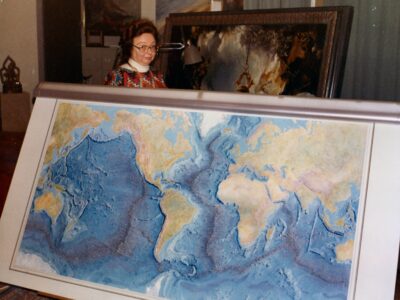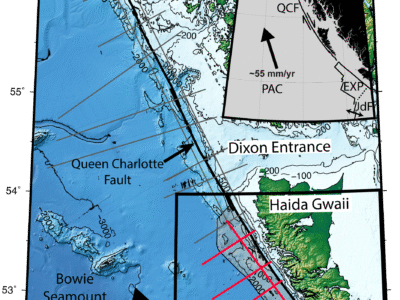Greetings from the night shift!
On board the Marcus G. Langseth, operations are 24 hours a day, 7 days a week. Those of us on the research team have settled into our eight-hour work shifts with four-hour blocks that usually overlap with one or two other members of the science party. Cascading shorter shifts in this way allows us to interact more with various members of the crew and science party, mitigates fatigue, and gives us a little more flexibility when deciding who gets to eat first while others keep working.

As a night-owl, I gladly accepted the 4am-12pm shift, which means I get to split my time interacting with folks from the day and night crews and, most importantly, get to eat breakfast for lunch every day. Working during the night in calm seas creates a peacefulness that, when coupled with the beautiful sunrises we see every morning, is hard to beat.

Although dropping the ocean-bottom seismometers off the side of the ship requires some preparatory work on our end, there is less for the science party to do while we are sending sound signals into the seafloor for our receivers to record. In between deployments/recoveries, during data acquisition, most of us choose to spend our “free” time down in the main lab, where a large wall of monitors running 24/7 are there to keep us up to date on the state of things. This is not necessarily time off, as we are still on the clock, but it does provide a great opportunity to get some additional work done. This includes applying some quality control to the various types of data we are collecting in addition to the seismic data, including the sub-bottom profiler and multibeam bathymetry data. And as a fourth-year graduate student, I would be remiss to not take advantage of the quiet early morning hours to set up my own little work station and tackle some work related to my thesis.

We will soon finish sending signals down into the earth and it will be time to recover the instruments resting on the seafloor and see what the data look like! Once that is completed, we will start the entire process over again on our second profile, which starts from the end of the first line and goes all the way past the subduction trench to just off the coast of Guerrero, Mexico.
Tanner Acquisto is a graduate student at Columbia University’s Lamont-Doherty Earth Observatory.



